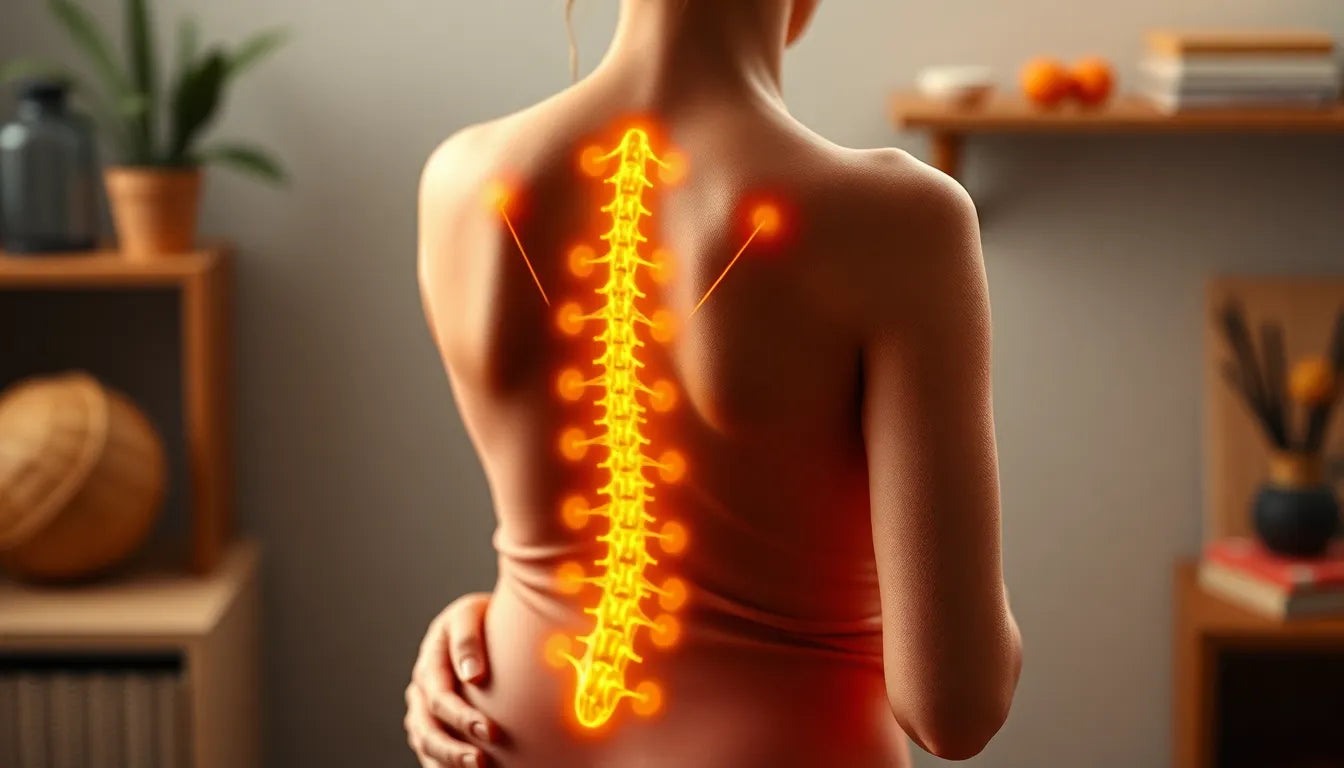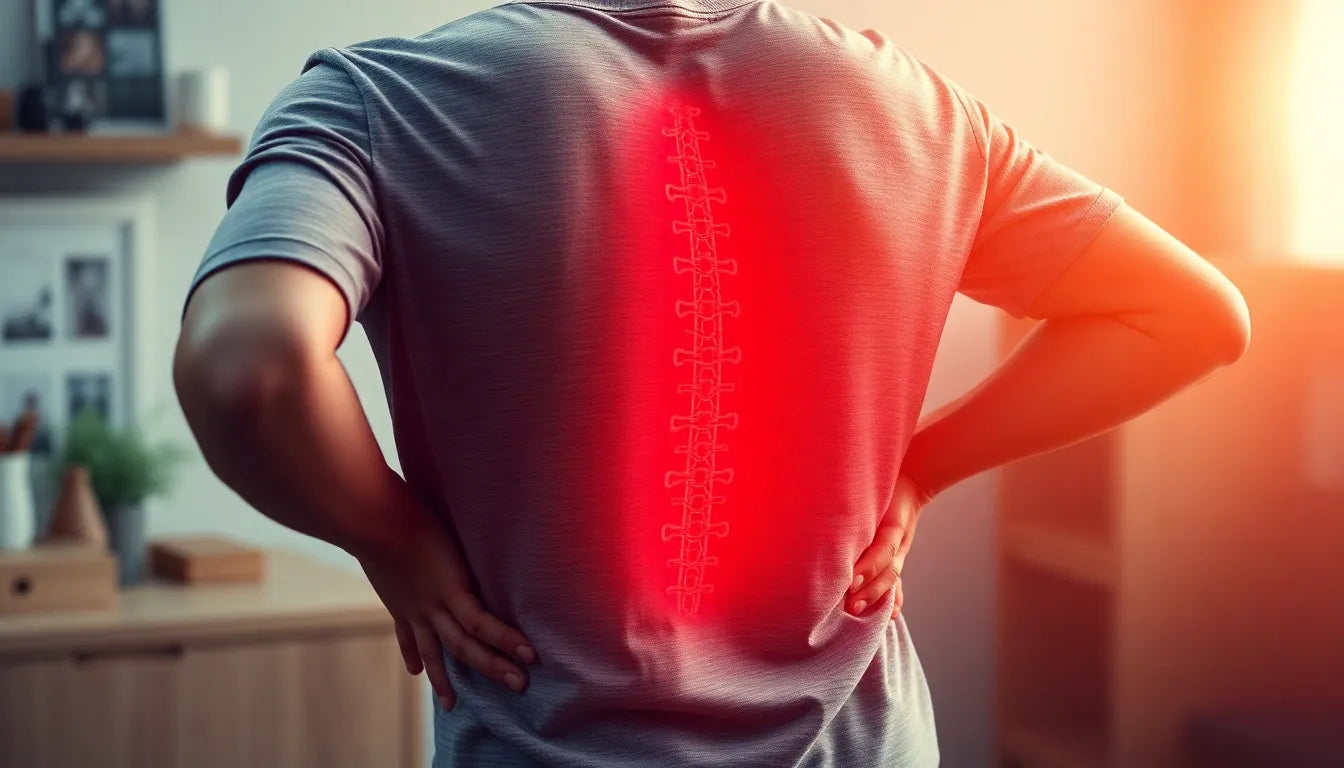Experiencing pain in the left side of the lower back when coughing can be both uncomfortable and concerning. This specific type of pain is more common than one might think, affecting many individuals at various stages of life. While for some, it might be a minor inconvenience, for others, it could signal a more serious underlying condition. Understanding the nature and potential causes of this pain is crucial for effectively addressing it.
Pain in the lower back, especially when it occurs on one side, can often be linked to a variety of factors. The discomfort may range from a dull ache to a sharp, stabbing sensation, and it can significantly impact daily activities. The act of coughing, which involves a sudden contraction of the muscles, can exacerbate this pain, particularly if the muscles in the area are already strained or tense. This symptom is not only physically limiting but can also cause anxiety about its origin and implications.
why understanding this symptom is crucial
Knowing the potential causes of pain in the left side of the lower back when coughing is important for several reasons. Firstly, it helps in determining whether the pain is due to a common issue or something that requires immediate medical attention. Many people might dismiss this pain as a result of poor posture or a temporary muscle strain, but it could also be indicative of more serious conditions such as a disc prolapse or even lung-related issues. By understanding the potential causes, individuals can make informed decisions about their health and seek appropriate treatment if necessary.
This blog post aims to shed light on the various causes of this type of pain, ranging from the more common ones like muscle strain and joint stiffness to less frequent but serious conditions such as pleuritis or pulmonary embolism. Additionally, it will guide you on when it's essential to consult a healthcare professional. Understanding these aspects can empower you to manage your symptoms effectively and take proactive steps towards recovery.
The following sections will delve deeper into these causes, providing a comprehensive overview that will help you recognize the signs and symptoms that should not be ignored. By gaining insights into what might be causing your discomfort, you can better navigate your path to relief and improved well-being. Stay tuned as we explore these topics in detail, offering practical advice and expert recommendations to help you address and alleviate your pain.
common causes of pain in the left side of the lower back when coughing
Pain in the left side of the lower back when coughing can often be attributed to several common causes. One of the most prevalent is muscle strain and tension. This occurs when the muscles in the back are overworked or improperly used, often due to poor posture or sudden movements. Coughing can exacerbate this condition as it involves a rapid contraction of muscles, which can further strain the already tense muscles in the lower back. Individuals with muscle tension may experience a dull ache or sharp pain that intensifies with coughing.

Lumbar support belt
Provides targeted lower back support and helps relieve pain from tension, sciatica, or herniated discs.
Another potential cause is disc prolapse, also known as a herniated disc. This condition arises when the soft inner gel of a spinal disc pushes through a tear in the tougher exterior casing. This can lead to nerve compression, resulting in significant pain that can be aggravated by actions like coughing, which increase pressure on the spine. Those suffering from a disc prolapse might experience radiating pain, numbness, or tingling sensations in the lower back, particularly on the affected side.
Joint stiffness is another factor that can contribute to pain in the lower back when coughing. The joints in the spine can become stiff due to lack of movement, aging, or underlying conditions such as arthritis. This stiffness can lead to discomfort during activities that require flexibility, such as coughing, bending, or twisting. Regular movement and specific exercises can help alleviate joint stiffness and reduce associated pain.
serious and less common causes of back pain when coughing
While muscle strain, disc prolapse, and joint stiffness are common causes, there are more serious conditions to consider. Pleuritis, or lung inflammation, can cause significant pain in the back, especially when coughing. This condition often accompanies symptoms like fever, chest pain, and difficulty breathing. The inflammation of the pleura, the membrane surrounding the lungs, leads to sharp pain that can radiate to the back, making coughing particularly painful.
Pulmonary embolism is another serious condition that can manifest as back pain during coughing. This occurs when a blood clot blocks one of the arteries in the lungs, leading to symptoms such as sudden shortness of breath, chest pain, and coughing up blood. Back pain associated with a pulmonary embolism is typically severe and warrants immediate medical attention.
symptoms and diagnosis of back pain linked to coughing
Recognizing the warning signs associated with back pain when coughing is crucial for seeking timely medical intervention. Symptoms that should prompt immediate evaluation include persistent or worsening pain, radiating pain down the legs, numbness or tingling in the extremities, and pain that intensifies with coughing or sneezing. These could indicate nerve involvement or a more serious underlying condition.
To diagnose the cause of back pain, healthcare professionals typically begin with a thorough physical examination and medical history review. Imaging tests such as X-rays, MRIs, or CT scans may be used to identify structural issues like disc prolapse or joint abnormalities. In cases where lung-related conditions are suspected, further tests such as blood tests, chest X-rays, or CT pulmonary angiography might be necessary to assess lung health and function.
Understanding the potential causes and symptoms of pain in the left side of the lower back when coughing is essential for effective management and treatment. By identifying the source of pain, individuals can take appropriate steps to alleviate discomfort and prevent further complications. The next section will explore self-care and treatment options, offering practical advice on managing pain and improving overall back health.
self-care and treatment options for managing back pain
When dealing with pain in the left side of the lower back when coughing, self-care and appropriate treatment options can significantly alleviate discomfort. One of the most immediate solutions is to use over-the-counter pain relievers such as paracetamol or ibuprofen. These medications can provide temporary relief by reducing inflammation and easing muscle tension. However, it is crucial to follow the recommended dosage and consult a healthcare provider if pain persists.
In addition to medication, incorporating physical exercises into your routine can help strengthen the back and improve posture. Exercises that target the core muscles, such as planks and gentle stretches, can support the spine and reduce the risk of future strain. It is advisable to perform these exercises under the guidance of a physiotherapist to ensure proper technique and prevent further injury.

Men's Posture Shirt™ - Black
Activates back muscles to improve posture and reduce tension; patented NeuroBand™ tech.
Making lifestyle adjustments is another effective way to manage and prevent back pain. Maintaining good posture, especially when sitting or lifting objects, can reduce strain on the lower back. Ergonomic aids, such as supportive chairs or lumbar cushions, can also help in maintaining a healthy posture. Avoiding heavy lifting and sudden movements can prevent exacerbating existing pain.
when to seek medical help
While self-care measures can be effective, it is essential to recognize when professional medical help is necessary. If the pain in your lower back persists despite self-care efforts, or if you experience symptoms such as radiating pain, numbness, tingling, or pain that worsens with coughing or sneezing, it is crucial to consult a healthcare professional. These symptoms could indicate a more serious condition that requires medical evaluation and treatment.
Healthcare providers can offer a range of diagnostic and treatment options, from physical therapy to more advanced interventions if necessary. Early diagnosis and intervention can prevent further complications and promote a quicker recovery.
frequently asked questions
What should I do if the pain doesn't go away?
If the pain in your lower back persists despite self-care efforts, it is important to seek medical attention. A healthcare professional can assess your condition and recommend appropriate treatments to address the underlying cause of the pain.
Can ergonomic aids help alleviate the pain?
Yes, ergonomic aids can be beneficial in supporting the back and reducing strain. Using items such as lumbar cushions, ergonomic chairs, or adjustable desks can help maintain proper posture and alleviate discomfort associated with back pain.
Is it safe to exercise with back pain?
Exercising with back pain can be safe and beneficial, but it is essential to consult a healthcare provider before starting any exercise regimen. A physiotherapist can recommend specific exercises that strengthen the back while minimizing the risk of further injury.
How can I prevent back pain in the future?
To prevent back pain, focus on maintaining a healthy lifestyle and proper posture. Regular exercise, a balanced diet, and ergonomic support in daily activities can help reduce the risk of back pain. Additionally, being mindful of lifting techniques and avoiding sudden, strenuous movements can protect the lower back from strain.


















